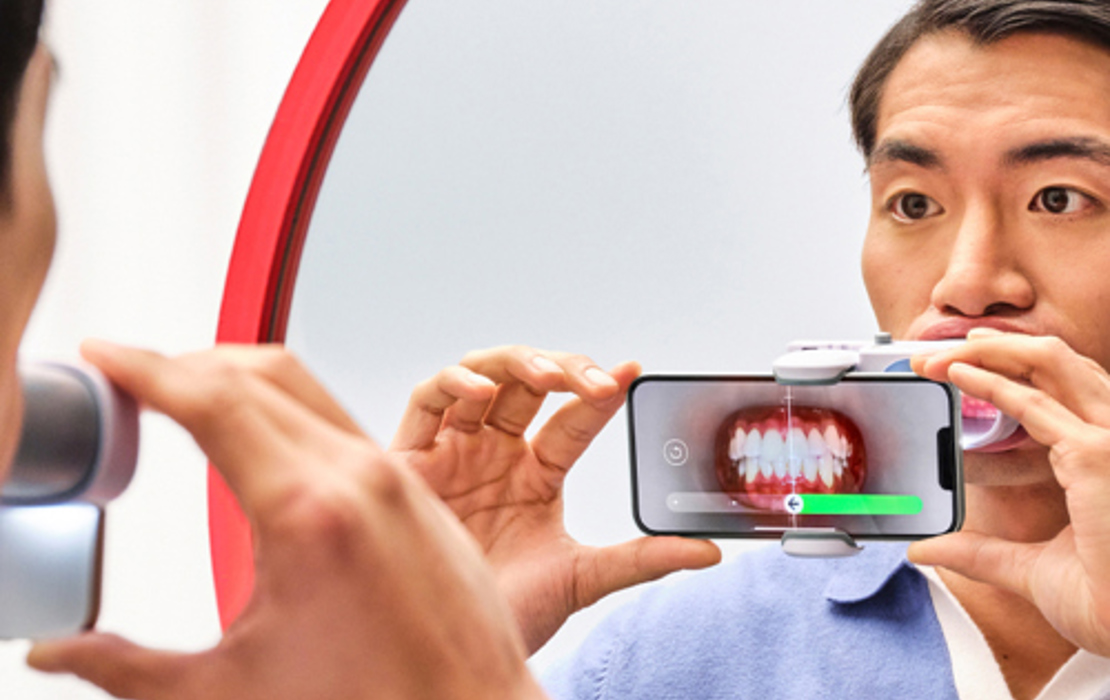My View: Children’s oral health in wake of an ominous pandemic

As a dental professional dedicated to the oral health care and preventive education of children and families, primarily from underserved communities, I am well acquainted with barriers faced prior to the advent of SARS-CoV-2. Those barriers have become an even larger concern for already marginalized populations. Beyond the profession of dental medicine, other providers in health care may be unaware of the exacerbation of tooth decay and other oral conditions secondary to the stay-at-home mandates sagely coordinated to help combat COVID-19.This includes physician colleagues, nurses and nurse practitioners, insurance administrators, and others.
While these professionals are not positioned to see what dentists routinely see, we are undoubtedly partners in prevention in the wake of this ominous pandemic. Many of the underlying oral disease outcomes secondary to COVID-19 are not clinically visualized or treated outside of the dental practice setting. Nevertheless, the implications are vast, crisscrossing all of health care affecting both children and adult patient populations. The consequences are gripping and now, more than ever, make clear the need for interprofessional and multidisciplinary collaborations that are universally integrated throughout dentistry and medicine.
Emotional effects impact oral health care
Children are likely to be experiencing worry, anxiety, and fear during this pandemic. This can include the types of fears that are similar to those experienced by adults, such as a fear of dying, a fear of their relatives dying, or a fear of what it means to receive medical treatment.2 Experts say stress can initiate chemical changes that may lead to physical symptoms. A lack of emotion or potty regression are common stress indicators in toddlers. Children may also be more clingy, withdrawn, angry or agitated. Older kids may develop oral aphthae, have trouble sleeping, headaches or complain about stomach or leg pain.3 These disturbing psychological and distressing physical symptoms can make the dental visit challenging. As oral health experts, we must be sensitized to these issues.
The waiting area may precipitate yet another layer to posttraumatic stress disorder (PTSD) as part of the health care equation. Imagine the scenario of a parent and young patient entering the dental office. They are greeted by someone wearing scrubs, a face covering (mask), brandishing a medical device with a barrel, a trigger and a hand grip and they proceed to point it at their foreheads. This is likely to be emotionally jarring for some pediatric patients, and especially so for families who may have already had prior exposures to social unrest and trauma. Some of these patients shield themselves when the infrared thermometer is pointed at them. A 9-year-old boy recently exclaimed that our office thermometer resembled a weapon.
Out of this new requirement to obtain temperature readings for everyone entering the dental practice a behavior management crisis could be provoked long before the patient reaches the dental chair, and possibly resulting in the use of protective stabilization to obtain a limited examination. What could have been office based, comprehensive treatment, instead escalates into a costly hospital case secondary to the clearly demonstrated acute stress reaction. Cognitive psychologist Dr. Amy Schwartz, has recently addressed the necessity of thinking about the emotional resonance of medical devices.4
Heightened emotional consequences, and the potential extension of behavior challenges, necessitate an increased level of awareness by dental professionals to these manifestations. Oral habits like thumbing sucking, cheek biting, and nail biting are no exception. An increase in the observation of linea alba in the buccal mucosa has been noted in some youth, particularly teenage and young adult patients.5 These and other cause-and-effect circumstances like those listed offer some understanding of the multiplication of patient needs now associated with the practice of dental medicine in this era of COVID-19.
While craniofacial, head, face, and neck injuries occur in more than half of child abuse cases according to the American Academy of Pediatric Dentistry,6 there are fewer reports of suspected abuse and neglect amid this viral crisis, due to school closures and stay-at-home orders. Rather than representing actual declines in abuse and neglect, experts in the field believe the numbers likely reflect a severe drop in identification and reporting.7 This report offers yet another instance where COVID-19 may impact children and alertness by the dental professional is mandatory.
The number of households affected by food insecurity has doubled since the pandemic started.8 Food insecurity is a lack of consistent access or enough healthy food to maintain an active and healthy lifestyle which can lead to an increased consumption of caries risk products such as sugar sweetened beverages. This is a prime example of the conceivable fallout from COVID-19 that is more likely to affect children from poorer communities. Of tremendous ongoing concern, families electing to postpone dental visits which can lead to more severe decay with the newer struggle now faced by pediatric dentists: longer wait times for hospital OR slots as more urgent “medical” procedures crowd out dental practitioners.
Prevention: The Call to Action
In the wake of COVID-19, comprehensive dental rehabilitation under general anesthetic for children were canceled in March along with other surgeries deemed to be “elective.” This exacerbated the burden of early childhood caries (ECC) and personal protective equipment (PPE) needs and, has left many children scheduled for this care with significant discomfort and untreated disease.
Consider the sheer amount of personal protective equipment (PPE) needed for any comprehensive restorative hospital cases. The N95 Respirator is needed by all dental surgeons because they unquestionably generate bioaerosol particles via dental handpieces. While costly, the N95 is the standard of proper ventilation care for both physicians and dentists, though not always equitably afforded to dentists.
This could prove to be a highly problematic impact of the coronavirus for the oral health care of children, and to the profession. This type of unconscionable barrier to safety for everyone in the operating room could reduce this exclusive and historically diminished health care workforce. Should pediatric and general dentists elect to discontinue providing these “non-elective” dental surgeries, the wellbeing and safety of two already vulnerable populations is at increased risk for potentially unthinkable outcomes.
Prevention to reduce intervention
Dental medicine innovations form an important part of our healthcare system, which has become severely compromised during the current pandemic of COVID-19. We are now seeing that teledentistry is gradually gaining acceptance by patients and families as well as being valued as a screening tool by healthcare providers. The need of the hour is to incorporate telehealth dentistry as a viable strategy to expand access and integrate into routine dental practice.9
Some states initiated telehealth dentistry coverage during the outbreak of this viral pandemic for children up to age 21. The legitimacy to this method of remotely viewing the oral cavity helps greatly to provide health care consultation, instruction and education to minimize transmission risk. The use of telehealth strategies to provide high-quality patient guidance on treatment priorities, diet counseling, smoking cessation and oral hygiene instructions is invaluable to reduce the risk of SARS-CoV-2 transmission. When utilized by dentists these measures can offer far more than “an ounce of prevention,” and far more than “a pound of cure.”
Prevention is the hallmark of the dental profession. The connection between oral health and respiratory health must remain at the forefront of preventive dentistry and recovery medicine to help contain the threats of this coronavirus. The case is made for the importance of the commitment to dentists as first line professionals. Ensuring the expansion and reimbursement for the delivery of comprehensive telehealth dentistry by leading health advocates in these hours of adversity is continued movement in the right direction and a “win win,” for all of health care.
The coronavirus is without doubt disrupting the usual system of oral health care for children and families. Though the consequences are gripping, the awareness of the impact COVID-19 is having on children’s oral health helps us to define the challenge areas we must face as a profession. The universal institution of prevention based oral hygiene instructions, diet counseling, and smoking cessation education throughout dental medicine is a welcomed Best Practice, with or without a global pandemic in our midst.
1 Centers for Medicare & Medicaid Services. CMS issues urgent call to action following drastic decline in care for children in Medicaid and Children’s Health Insurance Program due to COVID-19 pandemic [press release]. Available at: https://www.cms.gov/newsroom/press-releases/cms-issues-urgent-call-action-following-drastic-decline-care-children-medicaid-and-childrens-health. Accessed October 5, 2020.
2 World Health Organization. Mental health and psychological resilience during the COVID-19. Available at: https://www.euro.who.int/en/health-topics/health-emergencies/coronavirus-covid-19/news/news/2020/3/mental-health-and-psychological-resilience-during-the-covid-19-pandemic. Accessed October 5, 2020.
3 Ogundele MO. Behavioural and emotional disorders in childhood: a brief overview for paediatricians. World J Clin Pediatr. 2018;7(1): 9-26.
4 Quito A. Photos: a temperature gun to the head has become an iconic coronavirus image. Available at: https://qz.com/1806728/coronavirus-we-need-to-rethink-the-design-of-the-temperature-gun/. Accessed October 5, 2020.
5 Owczarek JE, Lion KM, Radwan-Oczko M. Manifestation of stress and anxiety in the stomatognathic system of undergraduate dentistry students. J Int Med Res. 2020;48(2):300060519889487.
6 Fisher-Owens SA, Lukefahr JL, Rao Tate A. Dental aspects of child abuse and neglect. Pediatr Dent. 2017;39(4):278-283.
7 The Hunt Institute. State responses to child neglect and abuse during and after COVID-19 related closures. Available at: https://hunt-institute.org/resources/2020/05/state-responses-to-child-neglect-and-abuse-during-and-after-covid-19-related-closures/. Accessed October 5, 2020.
8 Bauer L. The COVID-19 crisis has already left too many children in American hungry. Available at: https://www.brookings.edu/blog/up-front/2020/05/06/the-covid-19-crisis-has-already-left-too-many-children-hungry-in-america/. Accessed October 5, 2020.
9 Ghai S. Teledentistry during COVID-19 pandemic. Diabetes Metab Syndr. 2020;14(5):933-935.



